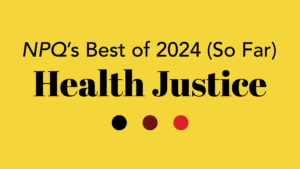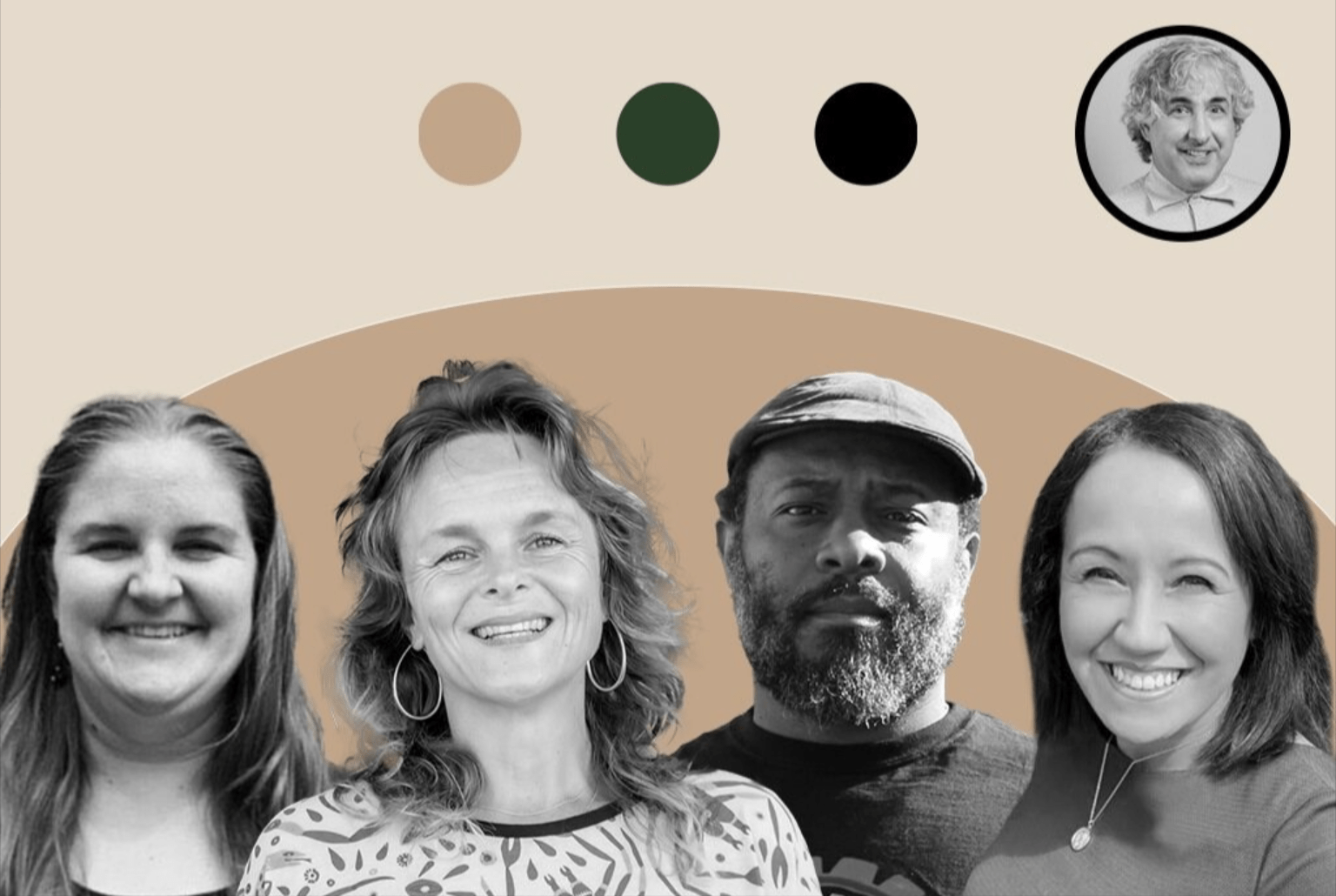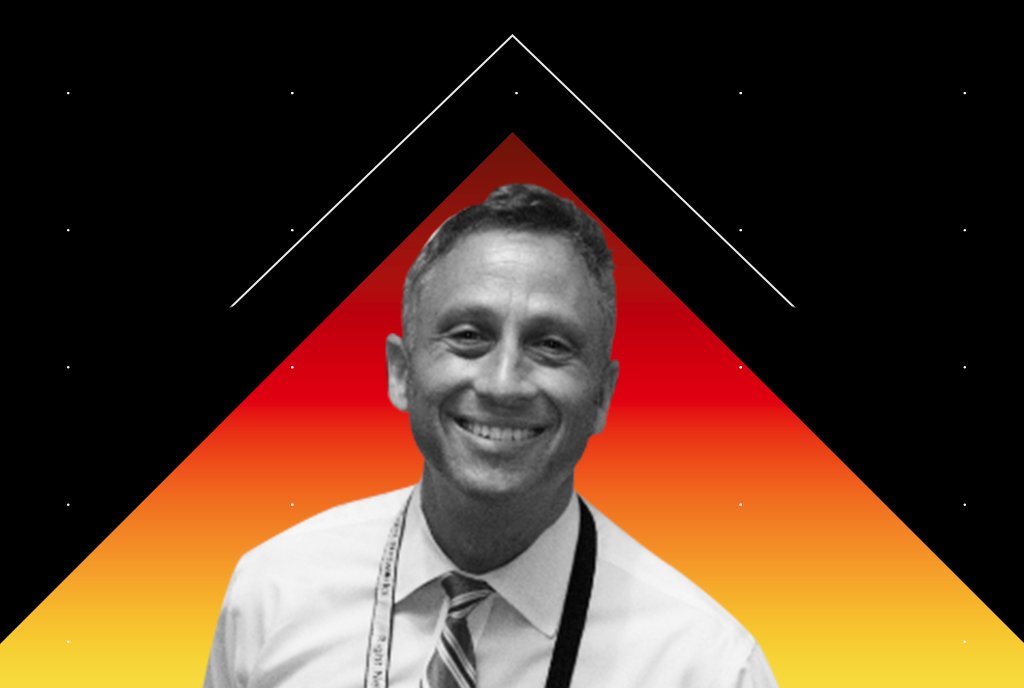
As much as 20 percent of the US population is neurodivergent, a concept that autistic disability rights advocates first developed to describe neurological diversity and move away from binary distinctions between “normal” and “abnormal” cognition. Examples of neurodivergence include neurological conditions such as attention deficit hyperactivity disorder (ADHD), autism spectrum disorder, Tourette syndrome, dyslexia, and other conditions related to mental health and learning differences.
While some conditions are labeled “neurodivergence,” it is imperative to understand neurodivergence within a spectrum of neurodiversity where neurological differences can be accepted and embraced. However, despite the diversity in how people think and process information, and progress in recognizing neurodiversity, our healthcare system does little to accommodate neurodivergence. My experiences reflect the obstacles a neurodivergent person encounters when seeking or receiving healthcare.
I am dyspraxic, meaning that I have a type of neurodivergence that gives me an underdeveloped sense of time, space, and coordination. As a neurodivergent person who has frequently sought healthcare, I have found that outdated and outmoded views about neurodiversity are far too widespread in health systems and clinical settings.
Unmasking Neurodiversity
It is imperative to understand neurodivergence within a spectrum of neurodiversity.
Neurodivergence falls under the invisible (hidden) disability umbrella. The Invisible Disabilities Association defines invisible disability as “a physical, mental, or neurological condition that is not visible from the outside, yet can limit or challenge a person’s movements, senses, or activities.”
The invisibility of the disability creates challenges related to care. In Gillian Hendry’s study on the experiences of people with invisible disabilities, she learned that “the visibility of their disability appears to be a factor in how seriously their disability is considered.” Hendry adds, “Because the disability cannot be seen, assumptions are made about how the individual feels.”
The symbols of disability we are exposed to also contribute to the public’s lack of awareness regarding neurodivergence. The most widely recognized disability symbol is the International Symbol of Access, a stick figure in a wheelchair shape used in public spaces worldwide since 1968. Everyone has seen wheelchair ramps and other symbols that mark resources for physical disabilities in public spaces, but not everyone sees what it’s like to live with an invisible disability.
One of the most globally recognized symbols of invisible disabilities is the Hidden Sunflower lanyard. The Hidden Sunflower lanyard program is a tool for people with invisible conditions—when a person wears the sunflower lanyard on their clothing, they signify that they may need a bit of extra patience and support because of their invisible disability.
The Hidden Sunflower lanyard was introduced in 2016 at the United Kingdom’s Gatwick Airport and is now widely available at businesses throughout the UK. In 2019 and 2020, the lanyard debuted in North America, Eurasia, and the Middle East. But the lanyard is still not accepted or recognized everywhere, showing that the understanding of invisible disabilities continues to lag behind that of visible disabilities.
Neurodivergent Healthcare Workers
A vital but overlooked aspect of neurological discrimination in health systems is the extent to which neurodivergent people in the healthcare workforce must hide their neurodivergence. The current evidence suggests that “neurodivergent individuals have been systematically excluded from the workforce due in part to particular sensory needs and the lack of required adjustments at work.” As a result, physicians, other care providers, and health system administrators are unlikely to disclose neurodivergence and are even more unlikely to be accommodated if they do.
For instance, in a paper on neurodiversity in doctors, Catriona McVey cites a survey respondent who says, “There seems to be an attitude amongst many healthcare staff that some specific learning disabilities/disability diagnoses are just ‘excuses’ and ‘labels’ for issues that most people deal with.” Though this sentiment is rarely expressed publicly, the idea it represents is widely held, and negatively affects the wellbeing of neurodivergent people, including neurodivergent physicians.
The invisibility of the disability creates challenges related to care.
In her Medscape article, Cassie Shortsleeve noted, “Neurodivergent physicians report difficult, even damaging, experiences in the healthcare field. They struggle with stigma, a culture of nondisclosure, and a lack of accommodations, which can lead to burnout and poor mental health.”
When neurodivergent healthcare providers struggle to access care, accommodations, and acceptance, they are unlikely or unable to provide a welcoming environment for other neurodivergent people. That welcoming environment aspect is crucial; without it, every neurodivergent person’s health problem becomes a question of whether seeking professional care is worth the risk of being misunderstood.
In a study on barriers to healthcare and autism, a participant said about their previous healthcare experiences, “It feels like a balance between ‘damaged enough to need help’ and ‘undamaged enough to be considered reliable’.”
Patient–Doctor Communication and Anxiety
According to Pete Wharmby, patient–doctor communication dynamics negatively impact neurodivergent peoples’ experiences. In his book Untypical, Wharmby states, “Explaining a health complaint to a doctor is riddled with opportunities for miscommunication.”
When seeing a doctor about pain, patients are given a pain scale of 0 to 10 to rate their pain and help practitioners determine its seriousness: 0 is no pain, and 10 is the worst pain you could experience. Pete Wharmby notes in Untypical that, as an autistic person, he tends to take questions such as these at face value. Without a frame of reference, he will often label his pain a 5, average pain, without being entirely sure if a higher number is a more accurate statement about what he’s experiencing. As a result, doctors often interpret any issues around pain as not being severe enough to receive treatment.
Sign up for our free newsletters
Subscribe to NPQ's newsletters to have our top stories delivered directly to your inbox.
By signing up, you agree to our privacy policy and terms of use, and to receive messages from NPQ and our partners.
As a dyspraxic person, I frequently respond at an atypical pace to verbal instructions in clinical settings. I hear one thing, but my body instinctively does the opposite. I usually compare those moments to an internet signal lost on its way to the nearest device. Medical professionals usually react to my inability to respond to verbal instructions at their pace with impatience and frustration.
Appointment times and dates not set in stone, particularly for invasive medical tests and procedures, can also be distressing for neurodivergent people, as people with autism often have adverse and intense reactions to uncertainty.
In medical settings, I experience anxiety triggered by anticipation of unfamiliar and uncomfortable experiences. It’s not the potential side effects I lose sleep over. It’s the anticipation of a medical instrument, from its temperature to its texture, against my skin. My brain struggles to cope with the alienness of unfamiliar medical procedures because of my sensitive nervous system. And my brain processes every step in too much detail, making me fixated on every possible outcome. In these situations, I cannot relax without holistic coping mechanisms like meditation.
For the Neurodivergent Community, Seeking Care Is Emotional Labor
In her article for the Disability Visibility Project, activist Amy Gaeta defines emotional labor as “managing another person’s emotions and social expectations.” The term has been around since 1983, when it was initially described by sociologist Arlie Hochschild in the context of the workplace. For people’s experience with disability it can be understood as the unpaid work that disabled people must do to navigate systems that marginalize and oppress them.
Neurodivergent people often have lower-quality healthcare experiences than their neurotypical peers because of poor communication, increased anxiety, and sensory sensitivity. According to Sensory Friendly Solutions: “Harsh lighting, loud noises, strong smells, and crowded waiting rooms can all contribute to sensory overload, leading to anxiety, frustration, and withdrawal from care.”
Being in a hospital can impair neurodivergent people’s recovery without access to tools such as quiet rooms, ear plugs, weighted blankets, and noise-canceling headphones. These tools are helpful when encountering hospitals’ most distressing features. Widespread misinformation about neurodivergence can also contribute to neurodivergent patients’ worries about seeking care.
Addressing frequently co-occurring health problems, like chronic pain, gastrointestinal (or GI) issues, and anxiety, requires a lot of emotional labor if you’re neurodivergent. Yet, these medical issues are regularly trivialized as short-term symptoms of neurodivergence that will go away on their own. This is problematic not only because of the potential seriousness of these symptoms but because performing the emotional labor of speaking about these health concerns and then having them trivialized can negatively affect neurodivergent people’s wellbeing.
According to an article written by Claire-Eliza Sehinson a nutritionist, and Dr. Megan Anna Neff, a psychologist: “Autistic people may be experiencing earlier signs and symptoms of cancer, heart disease, or mental health difficulties.” However, neurodivergent people “may not convey distress in a way recognized or believed by medics.” Effective self-advocates are great at ensuring their needs are understood and taken seriously. Yet stressful situations make effective advocacy difficult for even the most experienced advocates.
Involving a patient advocate in your medical affairs is a beneficial alternative to navigating care alone. Johns Hopkins Medicine noted that having a healthcare advocate present during hospital visits and doctor consultations is beneficial because “having two people hear the discussion and making sure the patient understands is much better than just one set of ears, since it can be difficult for the patient to remember all the details.”
Some rely on their trusted inner circle of family and friends for patient advocacy support. Having an existing relationship with your advocate can fill gaps regarding your best interests. Alternatively, you can subcontract medical affairs professionals to serve as a patient advocate, but the hourly rate ranges between $100 and $500 out of pocket.
Neurodivergent people often have lower-quality healthcare experiences than their neurotypical peers.
Practical Methods for Creating Neurodivergent-Friendliness
Practitioners who make minor adjustments to how they communicate with their neurodivergent patients can improve quality of care. According to the director of the Stanford Neurodiversity Project, Lawrence Fung:
Doctors should explain the steps of a physical exam and ask for permission before conducting the exam. If the communication with autistic patients is unclear, it may decrease trust and confidence in the physician and the medical system. Also, people with ADHD have difficulties with the mental process of planning and juggling multiple tasks. The medical system doesn’t always meet the accessibility needs of these patients, and that may lead to missed appointments with doctors, but appointment reminders are a big step forward.
Providing neurodiversity training to clinicians has enormous benefits. According to Uptimize, a company specializing in neurodiversity training: “Neurodiversity training starts with awareness and appreciation—but also extends to more role-specific, tactical instruction.”
A systematic review of neurodiversity training concluded that clinicians who have received neurodiversity training feel more comfortable identifying symptoms of neurodivergence and making an appropriate diagnosis or referral. They’re also more comfortable providing care to neurodivergent patients. Those unable to access neurodiversity training can learn much from listening to and addressing their neurodivergent patients’ communication, treatment, and care preferences.
So much good can come from neurodivergent medical professionals having access to the support needed to thrive throughout their careers. Healthcare professionals in the United States can take an approach similar to the UK’s Berkshire Healthcare Centre. To be more neurodivergent-friendly, Berkshire investigated how to improve knowledge of neurodiversity and what neurodivergent staff need to thrive in their environment. Efforts such as these produce a healthcare workforce where openly neurodivergent practitioners are as supported in the patient care process as their neurotypical colleagues.
Neurodivergent and disabled representation in the healthcare workforce is a powerful tool to increase the chances of neurodivergent people’s needs being taken seriously, help address those needs, and lead to better healthcare outcomes.











